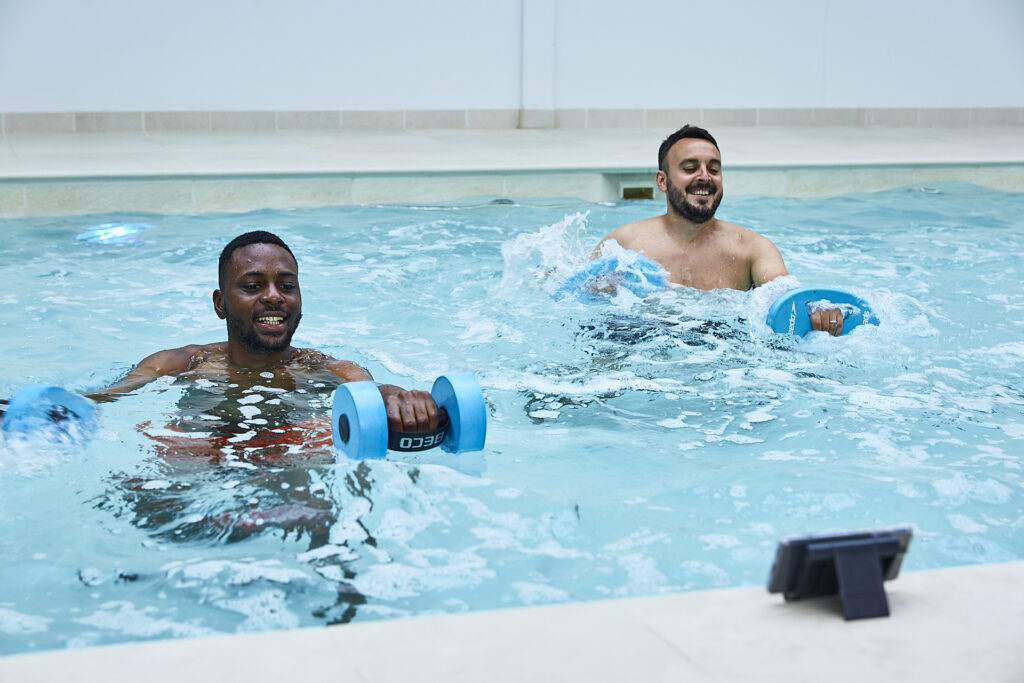Water is an enabler. Its buoyancy allows you to exercise without putting as much pressure on your bones or joints and at a higher resistance than on land, facilitating harder training for the whole body. Aquatic exercise allows you to effectively decrease the impact of your exercise, without reducing the intensity
Aqua exercise is Low Impact but High Reward
Exercising in water is versatile. It can be many things for many people: a fun, easy and social way to introduce exercise into your routine, a vital part of a rehabilitation programme, or an effective low-impact alternative to high-impact forms of exercise. It can be particularly valuable for seniors, people who have sustained injuries or those with conditions such as arthritis or back pain.
Best of all, you can easily take part in water-based exercise even if you’re a non-swimmer or not the most confident in water.
Why exercise in water?
There are many benefits to exercising in water – it allows more people to access exercise in unique ways and provides different ways of training. One benefit of water is that it creates hydrostatic pressure, which reduces vascular (blood vessel) resistance and heart rate. This reduction in heart rate allows you to exercise at a higher intensity than on land, and avoids putting strain on your heart.
Aquatic exercise is especially beneficial for people with joint, mobility or pain conditions, as it allows people to self-manage their conditions, reducing pain and increasing mobility. These conditions include:
- Arthritis
- Back pain
- Osteoporosis
- Ankylosing spondylitis (AS)
- Joint pain
- Joint replacement surgery
- Fibromyalgia
- And many more musculoskeletal conditions
The benefits of aquatic exercise
1) Improve cardiovascular fitness
Aquatic exercise provides a training option for aerobic fitness, mobility and power.
2) Maintain aerobic fitness when injured
Water helps maintain functional capacity (ability to perform aerobic work) while either injured or unable to train on land.
3) Avoid overtraining
The reduced impact of exercise in water allows you to train harder and add additional exercise to your training load without risk of overtraining.
4) Rehabilitate effectively
Water promotes an optimum environment for healing and facilitates functional recovery. Aquatic exercise is a great training option as part of a rehabilitation programme – from recovery following surgery, prehab (preventative exercise to reduce the risk of injury) and return to sport following an injury .
5) Train together
When you swim or exercise in a swimming pool, you will have noticed the dragging sensation as you try to move your body through the water. This is drag resistance, which is a great equaliser, allowing people of all abilities – from those just starting regular exercise to elite athletes – to train together. The harder you push water, the harder it pushes back.
The Aqua Move app created personalised aqua exercise programs just for you. For all water depths, any aqua exercise equipment and your preferences. Download today and jump on in, the waters great.


